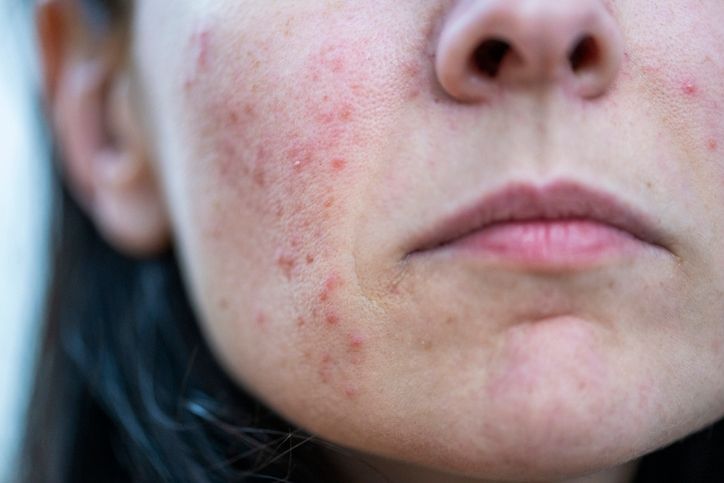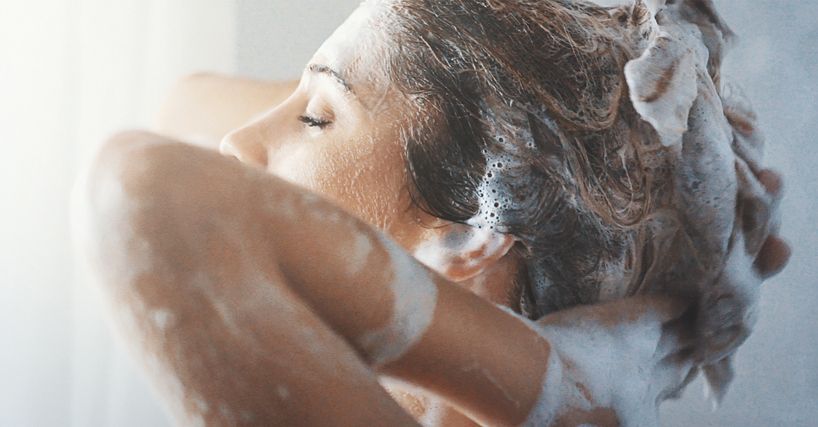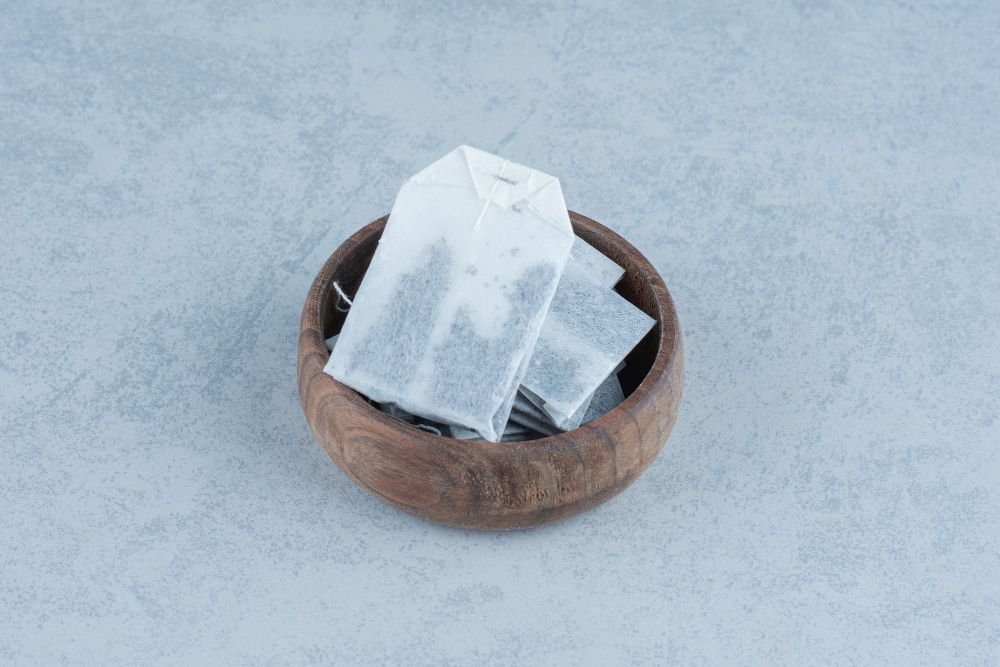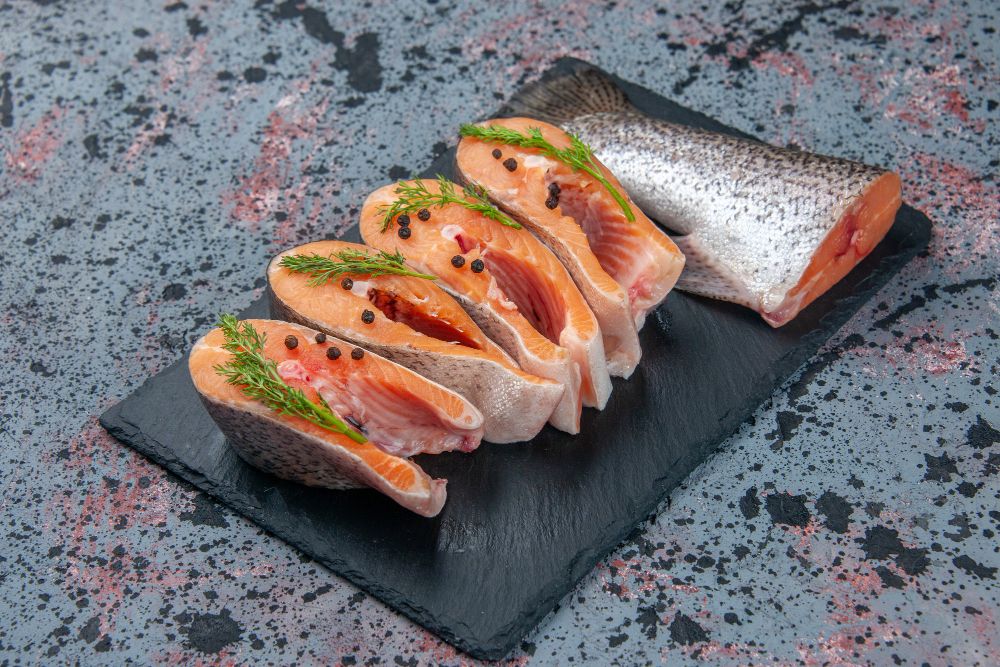
Book Now to Experience
Acne Treatment
1 Minute Self-Registration
Date should not be before minimal date
Author: Sophia Man|Updated: 23 July 2024
The one and only factor uglier than a pimple outbreak are the scars this could cause. We've all been accused of trying to pick away the pimples, oftentimes vigorously, and thus the visible outcomes are virtually always such a warning of why we ought to fight the impulse the very next time. Although if you manage to find the willpower to ignore the pimples, they may still cause scarring. In this article, we will look into what causes acne scars, the types of acne scars, and how they form. We will also look into the different treatments for treating acne scars and how the Acne Treatment at New Beauty Singapore helps stimulate collagen production to reduce acne scars and acne formation for brighter and toned skin!

1
How Do Acne Scars Form?
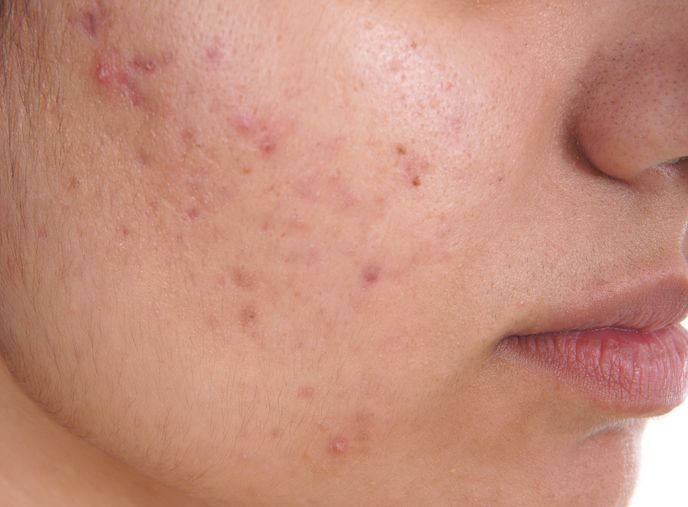
The skin is the biggest orAgan in the human body. There are three basic components to it. They comprise, in order of thickness, the epidermal layer, dermal layer, and hypodermal layer. These layers safeguard the delicate internal organs from weather, Ultraviolet radiation, and infections, while also helping to manufacture Vit D from sunshine. Acne can appear anywhere there are sebaceous glands, but it is most common mostly on the face, rear, and chest.
Acne scars develop as a result of the aggravation of acne lesions. The breakout pore expands, and the porous wall begins to collapse. Sometimes acne lesions are tiny, with superficial scars that disappear fast. Blemish fluids can also leak into underlying tissues, causing deeper scars and scarring. The natural skin reaction is to create scar tissue with young collagen as a way to treat acne scars.
Acne scarring is classified into two types: scarring that emerges when the flesh is lost, leading to a depression throughout the top layer of the skin, and scars that emerge when tissue is elevated on the skin's surface. In reality, this form of acne scar indicates that the skin is performing its duty – possibly quite well. The skin produces collagen or known as repair tissues, to aid in the healing of the damage — the pimple — but when it produces far too much collagen, elevated scarring appears.
Keep in mind that just because you have acne, that doesn’t mean you’ll get scars. And if you do (one in five people with acne will also have scarring), the good news is that not all acne scars are permanent! Treatments are available. Some treatments nearly remove the scars while others help the skin heal itself with its own collagen.
Remember that the mere fact you experience breakouts does not guarantee that you will get scarring. But if you get them don't worry as some acne scars remain reversible and one in five people with acne is bound to experience acne scars. There are alternative treatments. Some acne scar removal procedures almost completely eliminate the scarring, whereas others assist the face in healing naturally by using its own collagen production.
But before we dive into treatments, let us look into the different types of acne scars.

2
What Are the Types of Acne Scars?

Whenever a breakout enters the epidermis extensively and destroys the tissue underneath it, acne scars develop. Acne scarring is typically classified into two categories. These are some examples:
1. Acne hyperpigmentation
Acne hyperpigmentation happens when a darker area forms just on the epidermis just after the acne has been removed. These black patches can appear in persons of all types of skin; however, they are more prevalent in individuals with deeper complexions. African Americans, Hispanics, Asians, Native Americans, Native Hawaiian, and those of Middle Eastern heritage are at risk of acquiring acne hyperpigmentation after the acne has healed.
Pigmentary acne is distinct from other types of breakouts in that it appears as a black patch or spot just on the surface of the skin rather than an elevated blister. Different kinds of breakouts appear as inflammatory sores known as comedones.
Medication for pigmented acne is also distinct from therapy for many other kinds of breakouts. Comedogenic chemicals that diminish the visibility of acne are used in treating acne, whilst skin-lightening agents are used in pigmented acne scar procedures.
2. Pick marks or deep pitted acne scars
Pockmarks, also known as pick scars or acne scars, are hollow lesions that can resemble pits or dents throughout the face. These develop whenever the natural skin's innermost layers are damaged. Depressed scars of acne include boxcar scars, rolling scars, and indented scars on the skin surface.
Additional collagen is created as these lower layers recover. The excess collagen might cause scar tissue to appear that doesn't correspond to the remainder of the skin. Deep gouges are obvious because they distinguish themselves from the remainder of the skin. Just a handful of them might cause the skin to appear irregular, which could render some individuals to be more self-aware.
Read More

3
What Causes Pigmented Acne Scars?
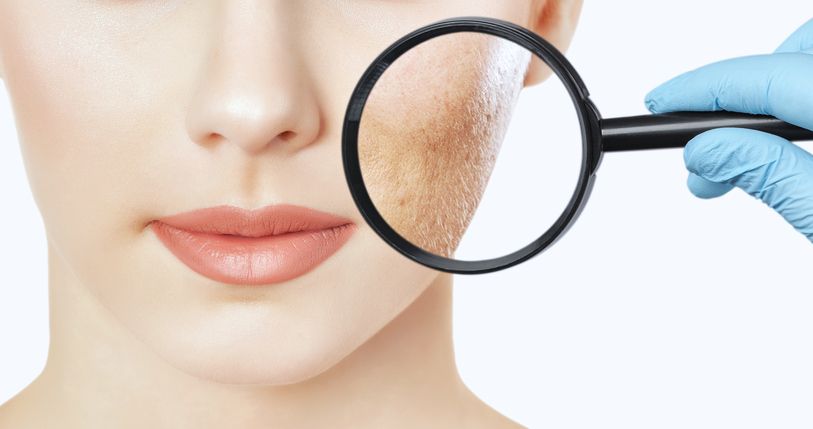
Since the skin generates higher melanin when acne heals, dark patches may form just on the face. Skin pigment or melanin is the pigment that imparts skin its colour. Increased production of melanin in one region or area on the skin's surface may lead it to look tanned, or dark brown.
Certain acne lesions with pigmentation can develop in the dermis layer of the skin. These deep infections would be blue-grey in colour and may be persistent. Physicians are unknown what generates varying degrees of discolouration. More research is needed to identify what influences this characteristic.
the overproduction of melanin can arise as a result of skin irritation. Scientists claim that certain immunologic and inflammatory variables can enhance melanin synthesis. The precise mechanisms are still unknown, although these elements may also include:
· proteinoids · chemokines · redox oxygen radicals
When one person gets pigmented acne, contact with the sun or Ultraviolet rays could worsen its condition.

4
What Causes Deep-Pitted Acne Scars?

Deep pitted scars can be caused by any ailment or condition that causes imperfections on the face.
Breakouts
Pimples are among the most likely reasons for pockmarks or deep pitted acne scars. Acne affects the majority of individuals, particularly during biochemical changes that accompany adolescence. Throughout this time, your skin can produce an excess of oil, that blocks the pore and produces pimples and blemishes. Picking pimples and blemishes might result in pockmark scars in the future. Regardless of whether a person allows serious acne to cure by itself, severe breakouts might develop pockmarks or deep pitted acne scars.
Viral illnesses
Viral infections, such as measles, were once a frequent cause of pockmarks. While smallpox has almost vanished, other diseases, including such chickenpox, can generate tell-tale scarring.
Chickenpox is characterised by tiny, irritating lesions that appear throughout the body. Pinching the scar tissue before it heals properly can result in a slight indentation.
Additional illnesses
Some illnesses, such as those caused by the bacterium staphylococcus or streptococcus, can result in injuries that produce pick marks.
These infectious diseases can arise in the hair follicles and cause a boil. A fresh wound might potentially be septic.

Book Now to Experience
Acne Treatment
1 Minute Self-Registration
Date should not be before minimal date

5
What Are the Treatment Options for Hyperpigmentation Acne Scars?

The first recommendation dermatologists given to patients who have pigmented acne is to figure out what's causing it. If the pimple is generating dark patches, patients must control acne to avoid the creation of pigmentation spots after the blisters have disappeared.
Skin specialists also advise treating pigmentation acne as soon as possible. Timely therapy can hasten the withering phase. Individuals who use pigmented acne therapies should be informed that lightening acne scars can take a little time. Sometimes spots can vanish on their own, but it could take nearly a year.
Acne pigmentation deep inside the skin's dermis could be more challenging to address and could even be everlasting. Before using a skin-lightening treatment, people ought to have their skin thoroughly examined by a specialist.
1. Prescribed drugs
Specialists advise using items that include one or more of the following components:
· azelaic acid · 2% hydroquinone · kojic acid · glycolic acid · tretinoin cream · Vitamin C
Certain chemicals have the ability to brighten dark patches on the skin. Many of these compounds could also reduce melanin synthesis, which is the main cause of pimple pigmentation.
2. Sunblock or sunscreen
Everyone should use sun moisturizers and lotions to shield themselves from the sun. Acne sufferers with pigmentation may discover that the patches become much more visible following exposure to the sun. Specialists advise persons having pigmentation acne to restrict their overall exposure to sunlight. Individuals should apply sunblock with at least a sun protective factor (SPF) of 30 plus sun-protective apparel. Individuals must take these precautions even if it’s raining cats and dogs, snowing, or gloomy outside.
3. Other treatments
Doctors may propose medical or non-invasive therapies based on the extent of pigmentation of acne or the reaction to topical applications. Using chemical peel is one of the most popular non-invasive beauty treatments performed and the most prevalent reason for employing them is pigmentation. Laser treatments for acne scars may also be used to treat acne pigmentation.

6
What Are the Treatment Options for Deep Pitted Acne Scars?
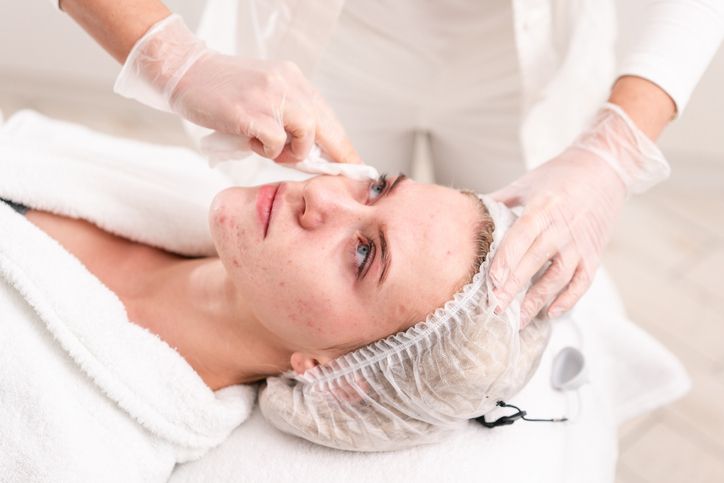
There have been various treatments for pick marks, each having a different outcome. Different skin types might be less tolerant of some of these therapies, so an individual must talk to a physician about their alternatives.
1. Chemical peeling
Most people who have pick marks opt for a chemical peel to decrease scars. A layer of acidic solution is placed on the face during a chemical peel treatment. An enzymatic solution might likewise be employed to achieve the same outcomes.
These therapies exfoliate the natural skin's outermost layer, causing it to renew. After the peeling, the epidermis may become red and inflamed, and it might shed.
Acid peels may require a repeated application to be successful, but they typically result in smooth, soft skin and a significant decline in apparent wrinkles.
2. Dermabrasion
Dermabrasion treatments yield comparable outcomes to chemical peels but without the addition of toxins. To remove the upper layers of skin, a tiny, revolving steel comb is swept over the afflicted area.
Based on the size of the area being treated, this dermabrasion or scrape is performed with regional or local anaesthesia. The epidermis then is allowed to recover on its own. Dermabrasion can assist to make the skin appear more even and decrease the appearance of pick marks.
Dermabrasion may raise the likelihood of fresh scarring or larger pores in some circumstances. Since the innermost layers of the skin are eliminated, an individual may be more vulnerable to skin problems.
3. Microdermabrasion
Microdermabrasion procedures, once more, seek to mitigate pick marks by eliminating the skin's uppermost layer. Rather than employing a chemical substance or wire brush, skin care professionals may employ abrasive materials such as small crystals of bicarbonate or aluminium oxide to scrape off the skin's surface layers. This works much better for minor surface scars and frequently necessitates multiple therapies.
4. Dermal fillers
To cure pick marks, physicians also may offer face injectables. These are chemical injections that raise individual pockmarks towards the level of the remaining epidermis on the face.
There are other products that are available that could be used, including hyaluronic acid and calcium hydroxylapatite.
The Food and Drug Administration (FDA) in the United States alone has authorized Bellafill for the therapy of acne scars. The silky collagen solution base contains microscopic polymethyl methacrylate (PMMA) microspheres. Dermal fillers have a transient impact that might range in duration from just a few months to one year, according to the product. Bellafill has a typical lifespan of five years.
5. Laser fractionation
The goal of fractionated laser treatment is to encourage scar repair. The pick-mark scar tissue is treated using laser light.
Radiation destroys the damaged skin's outermost part and promotes new cellular proliferation. Pockmarks are very often significantly less visible after a time of recovery.
6. Skin resurfacing with ablative lasers
Ablative laser resurfacing treatment is a type of intrusive laser procedure that employs a laser to peel layers of the skin. The surgery normally necessitates a few days of hospital services and care; however, the effects can persist for months without the requirement for any extra procedures.
Some hazards of ablative laser resurfacing include changes in the skin's colour, redness, and oedema. Ablative laser treatment might aggravate acne or scars in certain circumstances.
7. Micro-needling
Collagen-proliferation therapy, also known as micro-needling, is a procedure that includes using tiny needles to puncture the skin near the pick mark. The skin creates additional collagen to fill up the pick marks as the puncture wounds repair. Therapies may need to be repeated every several weeks, and substantial outcomes are typically seen within one year.
Although we have seen numerous laser treatments for acne scars, they may not be suitable for all skin tones, since deeper tissue laser treatments are not advised for deeper skin types due to the increased risks of scarring and discolouration. Prior to procedures such as micro-needling, peels, and lasers, individuals with darker skin tones would be pre-treated with 4% hydroquinone which is a kind of bleaching cream.
Luckily the Acne Treatment at New Beauty Singapore uses a dual-way spiral suction and drainage technology that stimulates collagen production and deeply cleanses the skin to give you hydrated and smooth skin with no acne scars!
Read More

7
Acne Treatment: Eradicate Acne Scars and Acne Issues with One Treatment!
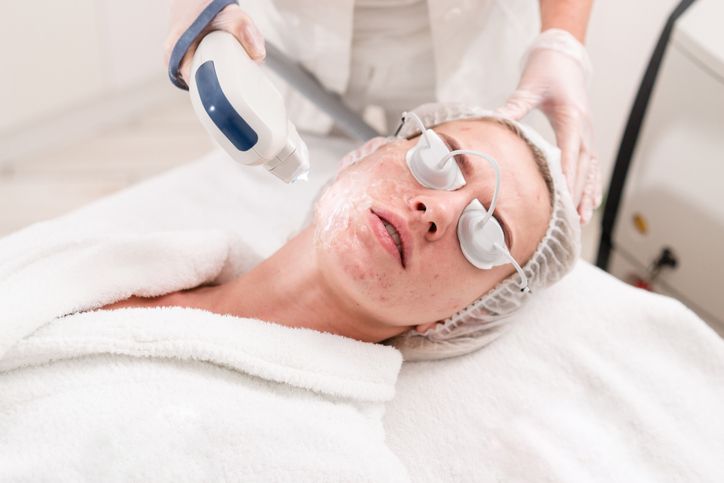
New Beauty Singapore’s Acne Treatment is suited for individuals suffering from acne breakouts such as acne vulgaris, whiteheads and blackheads. The Acne Treatment uses two-way spiral suction and drainage technology that deeply and gently exfoliates and cleanses acne-prone skin. This method simultaneously removes dead skin cells and unclogs blocked pores that cause acne breakouts. The revolutionary technology also helps to calm down acne inflammation and infection to give a smoother and toned face.
Once the laser treatment for acne scars is done, the Acne Treatment uses a clinical-grade moisturising serum that seeps into the dermal layer of the skin, thus hydrating and nourishing acne-prone skin. The unique hydrating essence also aids in balancing the water-sebum ratio on the skin thus preventing the secretion of excess sebum via sebaceous glands to give a brighter and less oily complexion.
The hydrating serum used in the Acne Treatment also stimulates new collagen production that fills in the holes of acne scars to give you a radiant and even complexion with fewer indents and irregularities. This acne scar removal treatment ultimately reduces the presence of acne scars and acne breakouts. This enhanced vacuum microdermabrasion does not utilise any course crystals or external medications other than the hydrating serum to restore the balance of your skin’s sebum secretion and accelerate the lessening of acne scars and acne.

8
Conclusion
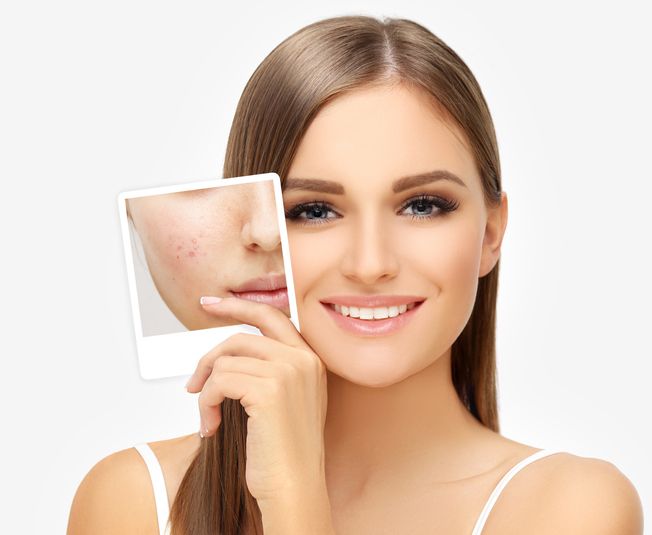
Acne scars can cause be a nuisance to get rid of but with the technological advancement in the aesthetic beauty industry, acne scars induced by pigmentation particles and severe acne infections can be removed with ease. But you need to be aware of the pros and cons of each acne scar removal treatment as well as your suitability for said acne scar removal treatment.
The Acne Treatment at New Beauty Singapore encompasses dual spiral suction and drainage technology accompanied by a hydrating serum that helps to exfoliate and cleanse the acne scars and acne breakouts while stimulating collagen production that helps to restore uneven skin tone and skin indents to give you an even and brighter face with no visible acne scars and acne breakouts.
Our team of experts will be more than happy to assist you in achieving clear and radiant skin. Book your appointment today for the Acne Treatment!
FAQ
What causes acne scars?
Acne scars are the by-product of picking your acne lesions when they are not fully healed. The disruption of skin tissue cause collagen production which can lead to the development of acne scars.
How many types of acne scars are there?
According to research, there are two types of acne scarring that is hyperpigmentation acne is caused by the overproduction of melanin. The other is called pock marks or deeply pitted acne scars as they cause indentations on the face which stem from severe acne or skin diseases.
Who is suited for the Acne Treatment?
The Acne Treatment is well suited for people experiencing moderate acne, worsen acne, acne vulgaris, whiteheads, blackheads, acne lesions, acne scars and other issues related to acne-prone skin.
How many sessions of Acne Treatment will I need?
Depending on the severity of the acne breakouts and acne scars, the Acne Treatment is customised accordingly to the individual's treatment goals. Most of the time, 10 to 12 sessions are recommended to the customers.
Is there a significant downtime after the Acne Treatment?
The Acne Treatment does not need you to allocate a special recovery time as this is a non-invasive acne scar removal treatment that does not utilise any form of surgery and incisions during its course.

Book Now to Experience
Acne Treatment
1 Minute Self-Registration
Date should not be before minimal date
Recommended Articles
COPYRIGHT© NEW BEAUTY MANAGEMENT LIMITED 2025. ALL RIGHT RESERVED.

